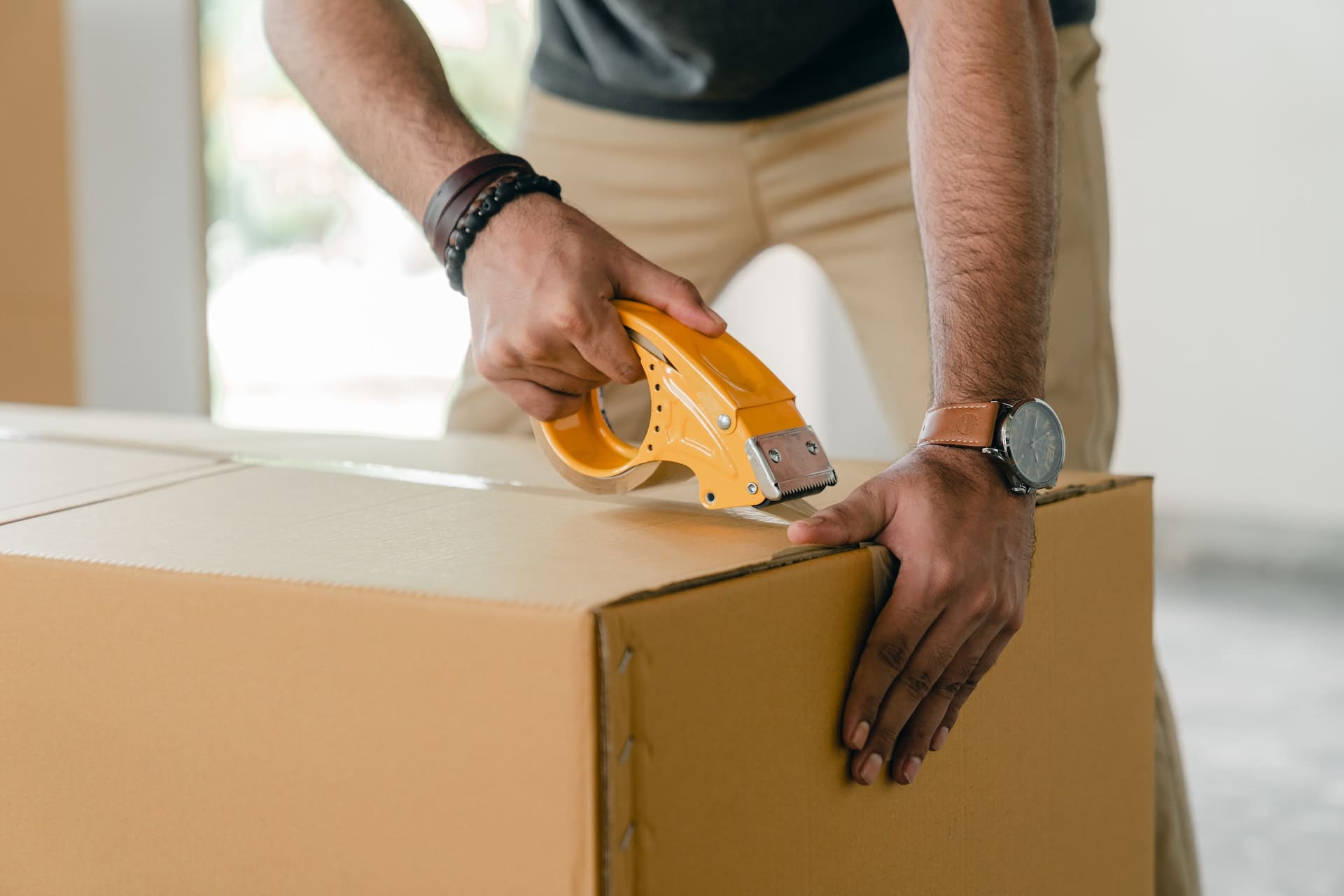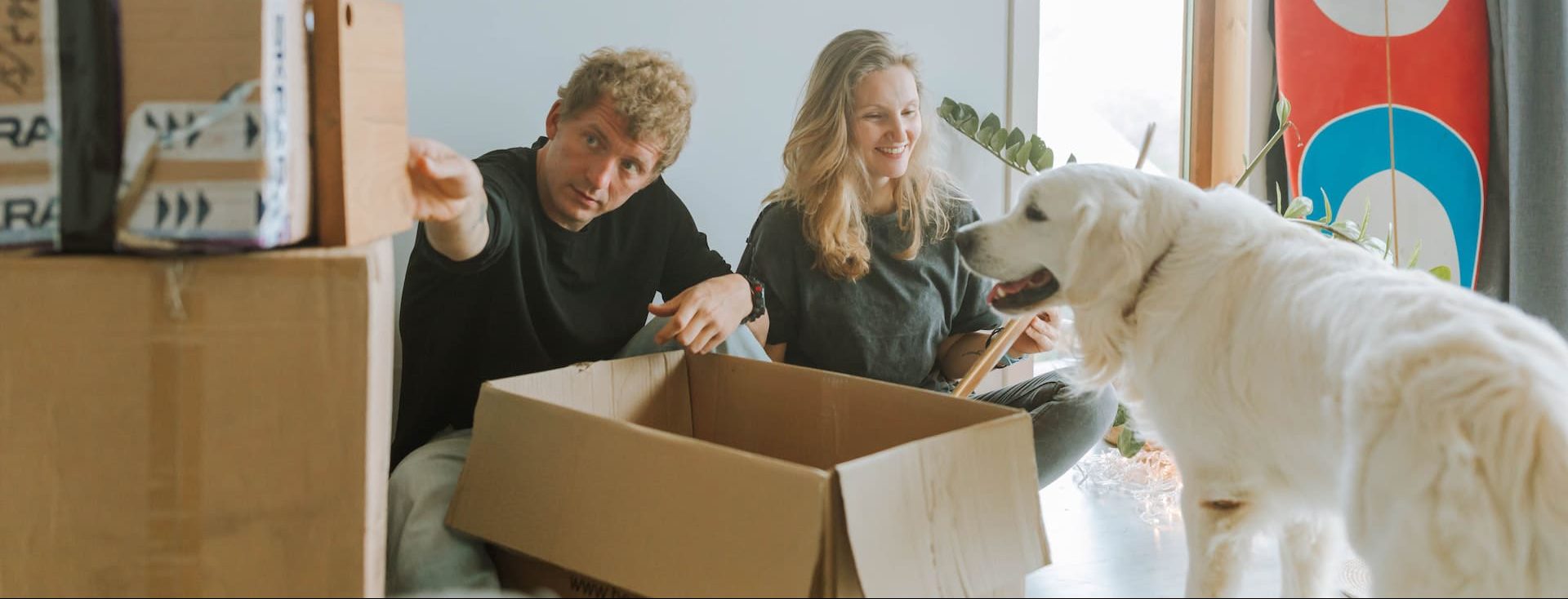Whether you’re moving for work, school, or for a fresh start with your family, moving, in general, can take a lot of time and effort to complete from beginning to end. This is especially true for those who have never moved previously and who have decided to move long distances to another province or country. From cardboard boxes and disassembled furniture to loading ramps and moving trucks, to put it quite frankly, moving is a daunting experience that sometimes requires the help of a professional moving company to help lighten the load. Because of this, it’s common to have questions like, “how does long distance moving work?” among others. Therefore, to ensure that homeowners across Canada are able to tackle their long-distance move with confidence and ensure their families and belongings get to their new destination safely, we’ve put together a comprehensive guide that will give you more clarity to the questions you may have. As such, for more information on how long distance moving works, keep reading!
What do movers consider long-distance?
When we talk about long-distance moves in Canada, we think of it as moving from one major city to another that’s not exactly close by. Imagine you’re in Toronto and you’re moving to Montreal, or even further out, like Vancouver. This isn’t something you can easily do with a couple of trips in a small rental moving truck over the weekend.
Specifically, if your new home is more than 250 kilometres away from where you currently live, movers will likely call this a “long-distance move.” This definition can vary a bit between companies, but that’s a good general rule. Essentially, if you’re planning to move from one city to another that’s far away, a cross-country move, or even out of the country, it’s likely considered long-distance.
This distance is significant because it means your belongings will be on the road longer, and the moving company might need to use different routes or even combine your move with others to make it more efficient and cost-effective. It also means they need to plan for overnight stays and longer periods of driving, which influences the cost and planning of the move.
When should I start packing for a long-distance move?
Packing for a successful long-distance move is not something you want to leave until the last minute. Given the scale and complexity of moving everything you own hundreds or thousands of kilometres, starting this process about six to eight weeks before your scheduled move date is wise. This might seem like a lot, but starting early helps avoid the stress of last-minute packing and ensures you’re fully prepared when moving day arrives. Here’s a helpful timeline full of packing tips for long-distance moving:
Weeks 6 to 8
Start by sorting through your things room by room. Decide what you really need to take with you and what might be ready for a new home (selling, donating, or throwing away). This is also a great time to start collecting boxes, tape, bubble wrap, and other packing supplies.
Weeks 4 to 5
Begin packing items you use less frequently. Seasonal items, rarely used gadgets, books, and decorations are a good place to start. Make sure to label boxes with their contents and which room they’re destined for in your new home.
Weeks 2 to 3
Ramp up your packing with the goal of having everything but your daily essentials boxed up. Keep items you use daily easily accessible and plan for them to be packed last.
Final week
Pack your essentials and prepare a box or suitcase with items you’ll need immediately upon arriving at your new home, such as toiletries, a few sets of clothes, and important documents.
How do you move long distance with a family?
Moving your family a long way to a new home takes a lot of planning and thought to make sure it goes smoothly and stress-free. It’s not just about moving your belongings from one place to another; it’s about moving your whole life and how everyone in the family feels about it.
The best way to move long distances with a family is to make sure everyone understands what’s happening and listens to each other’s worries right from the start. It can help make the whole move feel better and more exciting for everyone. Here are some steps to guide you through how to move long distance with a family:
1. Plan ahead
Start by talking to your family about the move. Explain why it’s happening and what it will mean for everyone. Answer their questions and address any concerns to help them feel involved and less anxious about the change.
2. Declutter together
Go through your belongings as a family. It’s a great opportunity to declutter, reduce the amount you need to move and possibly uncover items of sentimental value you’ll want to keep. Selling, donating, or throwing away things you no longer need can make packing easier and your new home less cluttered.
3. Pack smart
When packing, be systematic. Label boxes with their contents and the room they’ll go in at the new house. Consider colour-coding labels for each room to make unpacking easier. Keep a detailed inventory of what’s in each box, especially if you are using a moving service, to ensure everything arrives safely.
4. Keep routines
Try to keep your family’s routine as normal as possible. Consistent meal times, bedtimes, and leisure activities can provide comfort and stability, especially for children.
5. Essentials Kit
Prepare an essentials kit for the first few days after the move. Include necessary toiletries, a few changes of clothes, medications, chargers, snacks, and entertainment items such as books or games. This will help you settle in without having to unpack everything at once.
6. Stay connected and explore
Moving can be tough on kids as they may have to leave friends behind. Help them stay connected with old friends through social media, video calls, or planned visits, and encourage them to make new friends in your new location.
7. Explore together
Once you’ve moved, explore your new neighbourhood together. Discovering new places such as parks, restaurants, and activities can help everyone feel more at home and excited about the move.
8. Have patience and offer support
Recognize that each family member may adapt to the move differently. Be patient and provide support as everyone adjusts to their new surroundings. Open communication and shared experiences can help strengthen your family’s bond during this transition.
How do moving companies work?
A long distance moving company functions similarly to other moving companies. Generally speaking, a move is considered “long distance” if you are planning to move across the province, across Canada, or internationally. Furthermore, when calculating the cost of your belongings, a long-distance moving company will first require you to provide a list of items you wish to bring with you –sort of like an inventory list. This preliminary inventory list then allows your partnered long distance moving company to calculate an estimate on the price of services.
Fast forward to the day of your scheduled move; once all of your items have been loaded into the moving trucks, the total weight of your items will ultimately determine the final price of what you will be charged. Moreover, beyond helping homeowners move from one destination to another, long distance moving companies often provide additional services. This includes packing and unpacking, loading your items onto the truck, disassembling and assembling furniture, and selling moving supplies.
However, it is essential to remember that these additional services are not obligatory. Thus, allowing homeowners to customize their experience to their personal needs and expectations.
How should I plan for long-distance moves?
One of the more challenging aspects of moving long distances is planning. This is precisely why we’ve put together a list of everyday tasks you’ll most likely have to complete before the day of your scheduled move. However, we should note that while this is not an exhaustive list of tasks and responsibilities you’ll most likely have when you are planning your move, it should help you get started! Here is a closer look at what you should consider completing:
- Contact a professional moving company and confirm that they can assist you well in advance of your actual moving date.
- To avoid overpacking, organize your belongings by getting rid of any unwanted items that you don’t want to take with you.
- Purchase packing materials at least a move in advance to ensure you do not run out of supplies.
- Label your boxes by room and whether or not they are fragile.
- If possible, disassemble large pieces of furniture.
- Gather all of your essential documents and belongings before loading them into your vehicle on the day of your move.
- Change your address for essential bills and subscriptions before your moving date.
How far ahead of time should a long-distance move be planned?
Furthermore, we can honestly say that the best way to plan your long-distance move is to start as early as possible. This can help alleviate some of the pressures you may feel throughout the process and ensure that you are rushing last minute to finalize all the details of your moving day. At the same time, it is also recommended that homeowners contact the moving company they wish to partner with weeks in advance before they plan on moving. Not only does this help better your chances of getting the moving day that you want, but it also provides the moving company enough time to work out details and prepare for your scheduled move on their end.
With that being said, if you find yourself in a position where you need to move immediately within a couple of days, a lot of long-distance moving companies can also provide you with emergency last-minute moving assistance. Again, it is always best to contact the moving company you wish to work with for your long distance move as soon as possible.
How long does it take movers to deliver?
Admittedly, disruptions are usual in most types of transportation. As such, the wait for your personal possessions to arrive safely at your new home is among the most challenging aspects of moving long distances. Because of this, it’s critical to keep in touch with your movers to stay updated on the status of your shipment. This will give you notifications on the existing timetable, postponements, as well as other variables that may interrupt your shipment’s predicted travel time.
Moreover, determining an expected delivery time for your possessions is not as easy as it may appear because many factors are taken into account as your personal possessions travel from place to place. With that being said, most long-distance moves can take anywhere between 10 days to more than two weeks on average. However, because of a number of unpredictable variables, this duration is likely to vary all across the process and between homeowners.
What factors affect the time it takes for items to arrive?
As we mentioned, the timetable on which your items will arrive at your new location will vary between households. This is due to numerous elements that can affect this process from being streamlined from start to finish. Some of these elements may include:
- The distance of your move: This is obvious as the greater the distance, the longer the delivery will take to complete.
- Your shipment size: The more significant the shipment, the longer the delivery and transit time, which is why we always recommend that homeowners get rid of as many items they do not see themselves using in their new home.
- Peak moving seasons: Generally speaking, early summer, early fall, and late spring can often cause your shipment to be delayed because many moving companies are overbooked.
On the other hand, other factors that may affect the amount of time it takes to have your items shipped during your long-distance move include bad weather and other unforeseeable circumstances that may cause delays. Nonetheless, when working with a professional long-distance moving company, they should be able to provide you with an approximation as to how long it will take your items to arrive.
How can I track my belongings?
It is not yet possible to track your belongings during a long distance move as if they were a package. However, you can check in with the moving company or driver during the move to see how things are going.
You can make notes as to where your belongings are at any given time by inquiring ahead of time about the journey the truck or other transportation vehicles will take. Furthermore, make sure you have at least one of the movers’ phone numbers so you can contact them if they are going to be late. Remember, keeping in touch with your moving company throughout the delivery process will ensure a hassle-free shipment. Staying in touch with the company will enable you to monitor the headway of your delivery and ensure that you are not forgotten during the process.
Final Thoughts on long distance moving
As you can see, moving a long distance can be a hassle for homeowners who don’t know what to expect from the process. However, if you are feeling overwhelmed with the process, there are resources and help available to you if you need it. By using this guide, you can begin the process and ensure your long-distance move runs smoothly from start to finish. At the same time, one of the main ways you can gain assistance during your long-distance move is to partner with a professional moving company you can trust to oversee your experience.
At Atlas Care, we have more than 50 years of experience assisting Canadians to move all across the country and around the world, and we are prepared to ensure you get to where you want to go worry-free. Therefore, if you’re in the beginning stages of planning your long-distance move and require assistance, our team of friendly and experienced professionals is here to help whenever you need us.
Request a free moving quote from Atlas Canada’s long-distance movers today! We look forward to working with you!
Frequently asked questions
What do movers consider long-distance?
While this is more of a general guideline, many moving companies consider a move long-distance if you’re moving more than 250 kilometres (about 150 miles) away.
When should I start packing for a long-distance move?
Start packing about six to eight weeks before you move. This gives you plenty of time to pack without rushing.
What is the first thing you should pack when moving?
Pack stuff you don’t use every day first, like seasonal clothes, extra dishes, and books.


